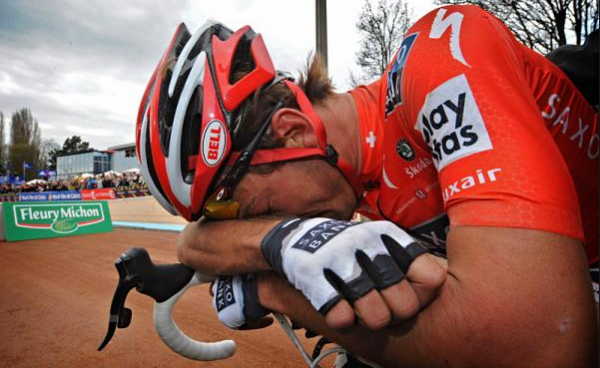How Far Is Too Far?
 It’s great to be enthusiastic about cycling! When you love something you don’t just want to do it often, you want to do it well. It’s common for an athlete to push him or herself, trying to outdo their own record for mileage and/or speed. But it’s possible to push too hard.
It’s great to be enthusiastic about cycling! When you love something you don’t just want to do it often, you want to do it well. It’s common for an athlete to push him or herself, trying to outdo their own record for mileage and/or speed. But it’s possible to push too hard.
Overtraining is a hazard, not just because it’s an open invitation for injury, but because it can actually result in a decrease in performance. It’s important to look out for signs that you might be overdoing it. There’s nothing more frustrating than spinning your wheels and finding that you’re getting nowhere.
It is particularly difficult in the Spring when you wake up from your hibernation, see the light, and feel the warmth and all it makes you want to do is get outside and go crazy! So how far is too far? Well, the general rule of thumb that everyone talks about is not to increase frequency, volume or intensity more than 10% a week, but that is just a general rule of thumb and many people are blessed with the ability to recover very quickly while others take quite a while to recover.
The truth is you have to LEARN to listen to your body, it will always tell you how it is feeling whether you want to hear it or not!
If you feel extremely powerful, motivated, have lots of energy, excited, happy and have an uncontrollable craving to get on your bike… you can stop reading… you have not gone too far.
Symptoms of Overtraining
Some of the symptoms of overtraining are easy to spot. You might find that you can’t quite complete the same mileage you were doing a few months ago. Or you may realize that your speed isn’t what it used to be. Anything that signals a decrease in power, intensity, motivation and even mood is a good indicator that you are pushing yourself too hard.
Physical symptoms of overtraining include decreased muscle strength and prolonged recovery times. Your body might suddenly need more down time than it once did. In some cases, a doctor might detect a drop in serum ferritin and/or hemoglobin. Other symptoms might be tougher to spot. A loss of appetite, a feeling of apathy or fatigue, being grumpy, and an inability to concentrate are all warning signs that you might not at first associate with your training schedule. Alone, or even together, these symptoms might indicate some other problem unrelated to your training. But if you suspect that you’ve been pushing yourself too hard, chances are you need to slow down or even take a break.
How To Recover From Overtraining
The best way to come back from an overtraining slump is to give yourself a break. Take some time off and focus on other low intensity sports or hobbies you enjoy. Active recovery is always better than sedentary recovery! The main goal is to give your body the rest that it’s demanding. It’s hard to step away from something you enjoy, but set your sights on the long-term reward.
It is very difficult to say how long you have to take a break, but it can be as little as a few days or as much as a month. The main thing to do is listen to your body and be able to honestly judge your energy levels, happiness, motivation and overall health. If you give yourself the rest you need, you will find that you’ll come back stronger and more motivated than you were before.